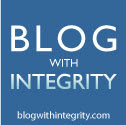A few weeks ago the national press and the biblioblogosphere were all abuzz with the news that the new Perry Library in Gilbert, Arizona (a branch of the Maricopa County Library District.) is not using the Dewey Decimal – or any – classification system. Instead, librarians had decided to shelve books “by topic, similar to the way bookstores arrange books.” An article in the Arizona Republic also went on to say that it’s “too confusing for people to hunt down books using those long strings of numbers and letters”.
The Dewey Decimal Classification system definitely has its problems, but in my opinion, somebody was not using DDC appropriately if “long strings of numbers” were used on a collection of 30,000 items. One of the beauties of DDC is that a cataloger can choose to use a shorter number (also called broad classification) for a smaller collection. It’s the cataloger’s responsibility to choose a number length that is suitable for his/her library’s collection size. Is 025.4 too confusing? I think it’s a perfectly good number shortened from 025.431 (the number for Dewey Decimal Classification).
The article also stated that now the “library will be organized in about 50 sections, then subsections, from sports to cooking, gardening to mysteries. For example, a book on the Civil War would be in the history neighborhood and in the U.S. section.”
Isn’t that what DDC does? In fact, it places books (and audios and videos) on the Civil War (973.7) chronologically in the U.S. history number (973) after books on the War of 1812 (973.52) and before the books of Reconstruction (973.8). You can give books on the Civil War longer numbers (973.711 = Causes; 973.717 = Southern Union sympathizers; 793.741 = Union troops), but in a collection of 30,000 items, 973.7 works for all of them.
Regardless of the length of the call number, libraries also need good signs indicating subject areas such as Cookbooks, Sports, U.S. History and maybe even U.S. Civil War. This would be a boon for the many library patrons who browse the stacks. Call numbers, though, are the best way to locate a specific book (and also the best way for library staff to inventory the collection.)
So my advice is don’t ditch DDC. Adapt and modify it so that it works for your size library. Use attractive signs that enhance DDC by directing patrons to a specific subject area. While libraries and bookstores have a lot in common, they are not the same and blindly following all bookstore practices will only detract from a library’s unique identity.
Subscribe to:
Post Comments (Atom)


1 comment:
The more we try to reinvent the wheel in librarianship, the more we find that the development of standards in our profession, such as DDC, LC, MARC, etc. have served the public well. Thanks for reinforcing our need to appreciate the basics and thank you for starting this blog. Interesting!
Post a Comment